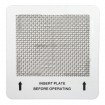Different Types of Air Purifiers
by Airpurifier Repaircenter BusinessAir
Purifiers are the perfect means of building an ideal artificial ecosphere for
the safe upbringing of you and your family. But there are so many different
kinds that one can choose from. In this article we discuss what options we have
and what are the pros and cons that they bear, take a look:
High Efficiency Particulate Air Purifiers (HEPA)

Pros: Developed in 1940s and is popular for the medical appeal. Trap 99.97% of particulate matter (larger than 0.3 microns). Traps what the human eye can't see. Filter bacteria, viruses and chemicals.
Help creating hygienic living space as it doesn't make use of harsh chemicals. Filter particulate matter by passing them through.
Cons: Doesn't remove
gases, chemicals or odours.
Ionizers
Pros: Rely on chemical injection for purification. Negatively charged oxygen atoms attack pollen and dust. Help masking visible particulate matter and smells.
Cons: Ionizers have proven to be ineffective. It doesn't eliminate harmful particles. Just moves them from air towards solid objects like walls. No end to toxic exposure.
Activated Carbon
Pros: Activated carbon when porous is able to absorb heavy quantities of pollution. It was earlier used to sell clean water. Carbon filters use small absorbent doors that catch wide range of pollutants. It can absorb chemicals, gases, odours, smoke. Once pollutant absorbed, never released again and is useful for people extremely sensitive to poor air.
Cons: Not extremely effective when it comes to particulate matter and allergens.
Electrostatic Filters
Pros: Innovative & effective. Use electric charge to trap particles mid-air. Even small sizes can purify as much as eight litres of air per second. It is cheap to replace and quite convenient. Remove quite very much everything from the air.
Cons: None as such.
Ultraviolet Rays
Pros: Can eliminate germs, viruses and bacteria. It eliminates common allergens and health risks. Some convert oxygen & water into hydroxyl & ozone which react and destroy the pollutants.
Cons: Commonly paired with other air filters. Does not remove particulate matter? Ozone can be harmful and should be minimized. Not extremely effective, as many microorganisms avoid UV rays.
Ozone Purifiers

Pros: Ozone plates
for air purifiers can prevent the multiplication of specific biological
containments. It is used in collaboration with other kinds of filters. Rely on
negative ion technology.
Cons: Not safe & effective. Produce ozone. Not demonstrated to be effective in air purification. Some governments ban their sale. It can trigger asthmatic reactions and can scar lungs. Don't eliminate pollutants, mask them instead.
Regardless of the kind of purifier you opt for, its essence will precede its existence. What this means is that the creation of the purifier will be undertaken solely because it is meant to do a particular job, unlike the human kind who is doomed to existence without any pre-ordained purpose except to continue breathing in and out bouts of fresh air.
Sponsor Ads
Created on Aug 26th 2019 06:17. Viewed 390 times.



